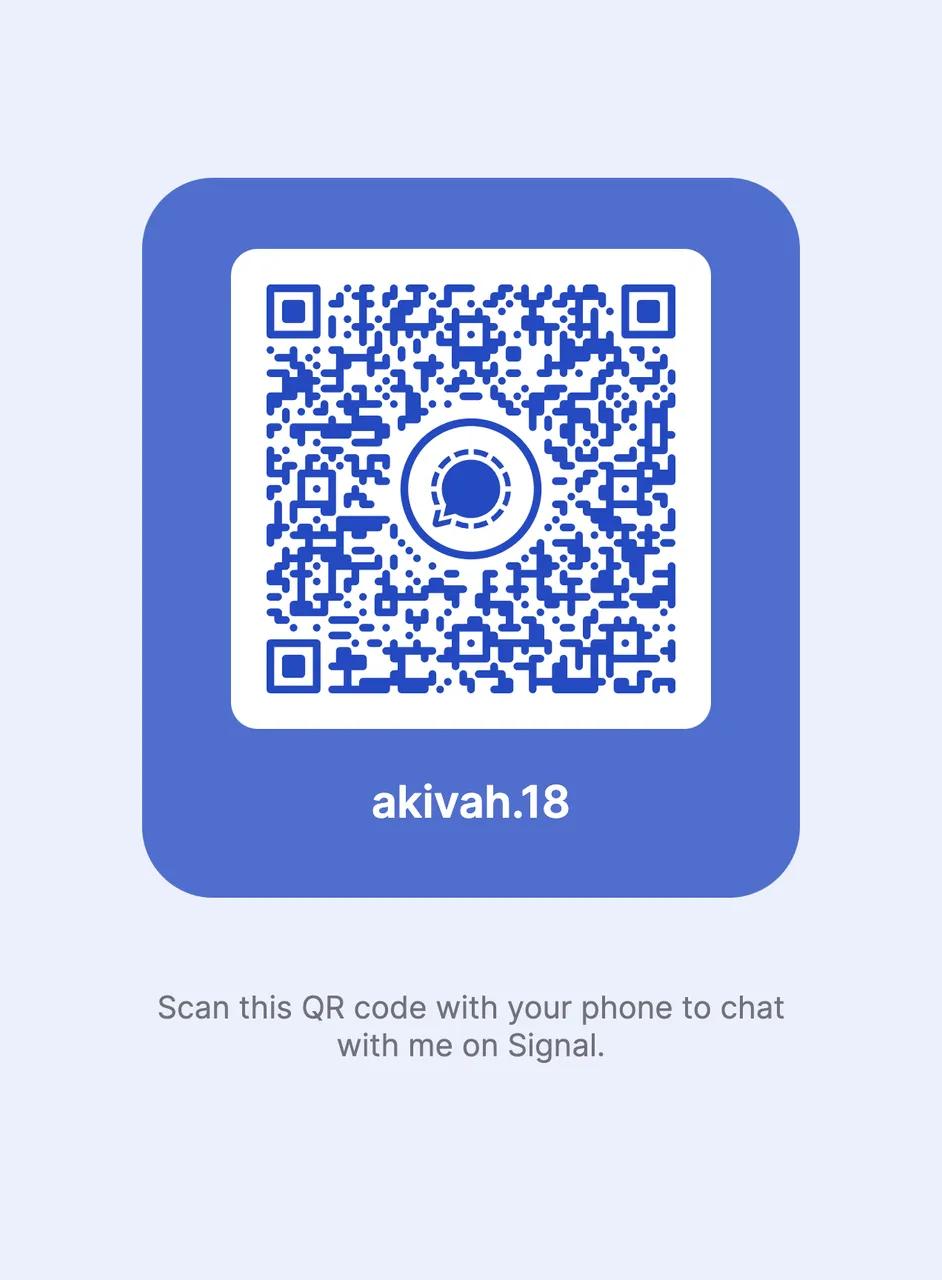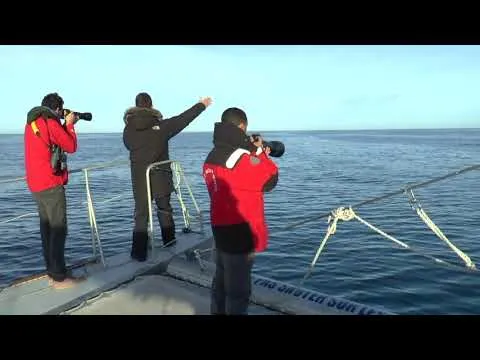Since I was launched in 2017 in France's Gulf De Lyon I have adapted to many programs, marine education, family cruising, scuba diving as well as my original purpose - marine research.
From my earliest days I have listened for dolphins and whales and had marine scientists aboard my super stable platform doing research.
[Source: Terre Marine, previous owner of Sea Explorer]
[UPDATE: I got this lovely email from my previous owner when he was told that I was resuming research work.]
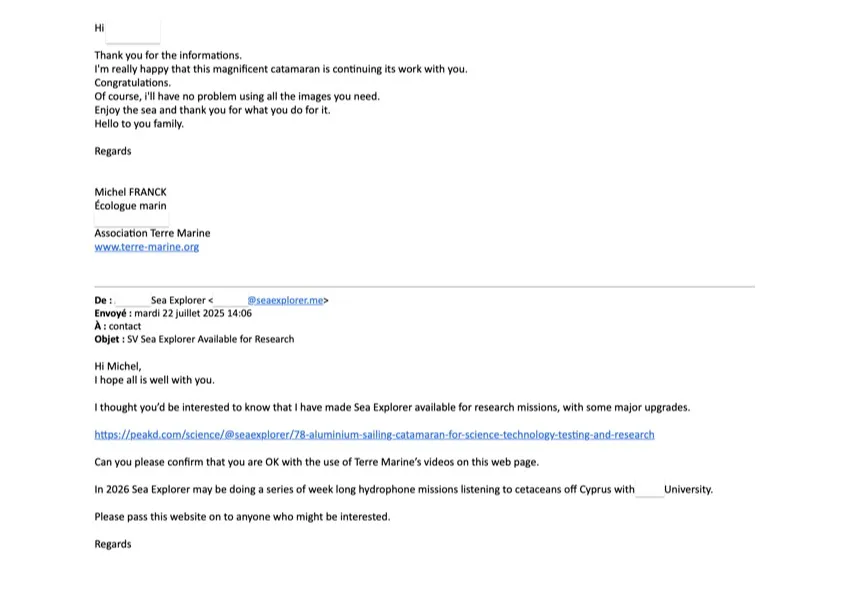
Substantial Upgrades
Now, substantially upgraded with silent solar electric 50kW propulsion, electrically furled sails, electric scuba diving compressor, 10 scuba tanks and gear and a 25kW solar power system able to deliver large amounts of electrical power at 12v, 24 & 48v DC as well as 220v single phase and 380v 3 phase AC, I am even more suitable for marine research.
I am also much more comfortable than my early days with a kitchen full of domestic appliances, a water bar for filtered hot and cold water, full size fridge, freezer, dishwasher, air conditioning, solar heated hot and cold running water, electric desalination watermaker, large TVs, comfortable lounge, new memoryfoam matresses for 9 people and much more.
Unique Features for Science, Technology Testing and Research
But in this post I wanted to highlight my unique features for science, technology testing and research.
1. Super Stable Platform
From my original inception, my 23.99m length and 11.76m beam make me one of the largest sailing catamarans in the world and a super stable platform for researchers who often need to stare at their laptop or into a microscope or other instruments that, in rolly conditions on other vessels, can lead to sea sickness.
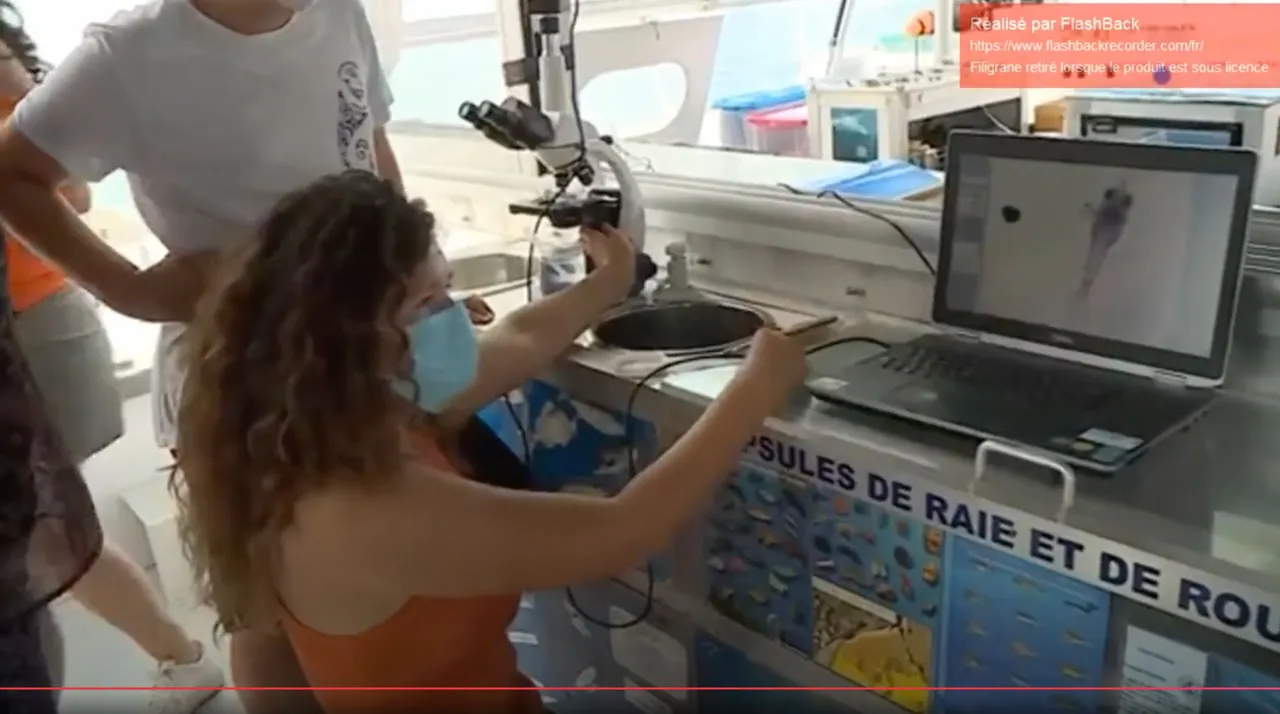
My previous owner said that scientists always loved working on Sea Explorer because it was so stable they often forgot they were even at sea when concentrating on their work.
Stability is also important for using and deploying various scientific equipment.
2. Silent, Clean Electric Propulsion, Unlimited range at 5 knots
With a 50kW Molabo 48v electric motor on the starboard side, a 10kW electric motor complementing the 93kW diesel (hybrid configuration) on the port side, over 100kW of LiFePO4 batteries and over 20kW of solar PV production I am a silent, clean, perpetual motion machine.
I am capable of cruising electrically at 5 knots on solar energy alone all day long.
This is perfect for towing hydrophones and listening to my cetacean friends for the long periods needed for detailed research.
With no need for a smelly, noisy diesel generator or even using the diesel engine one can experience the full peace & beauty of the sea and study it and its creatures without polluting their domain.
With some wind assistance, I have unlimited range at 6-13 knots with hydrogeneration and solar power quickly recharging my battery banks from night time depletion.
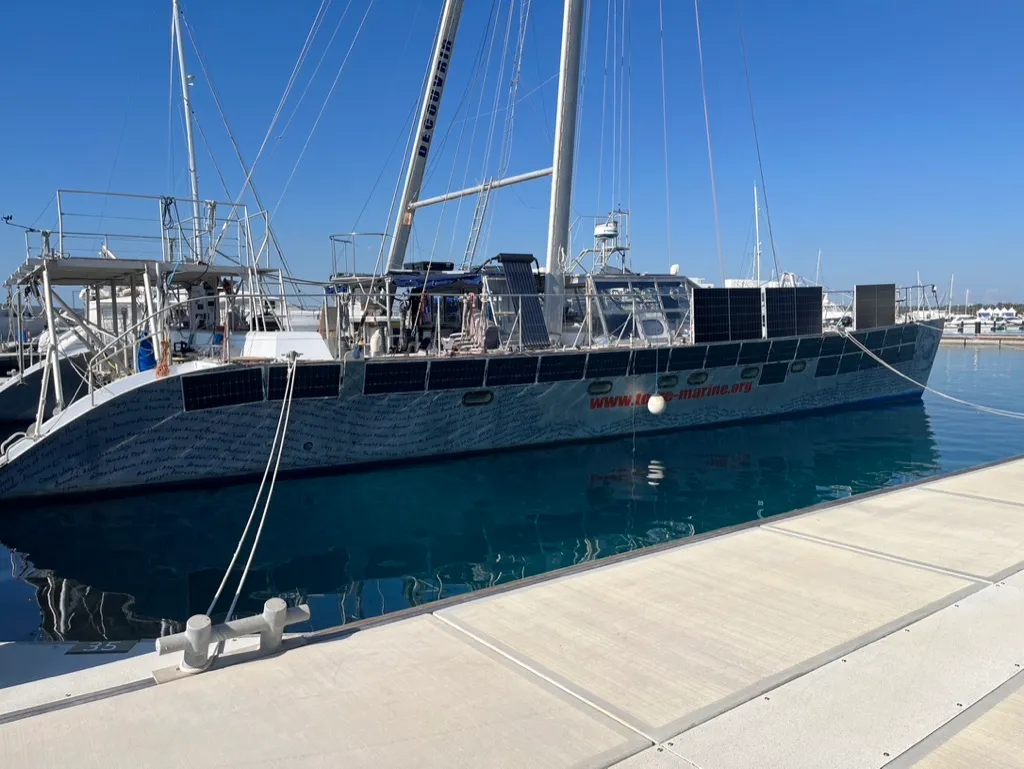
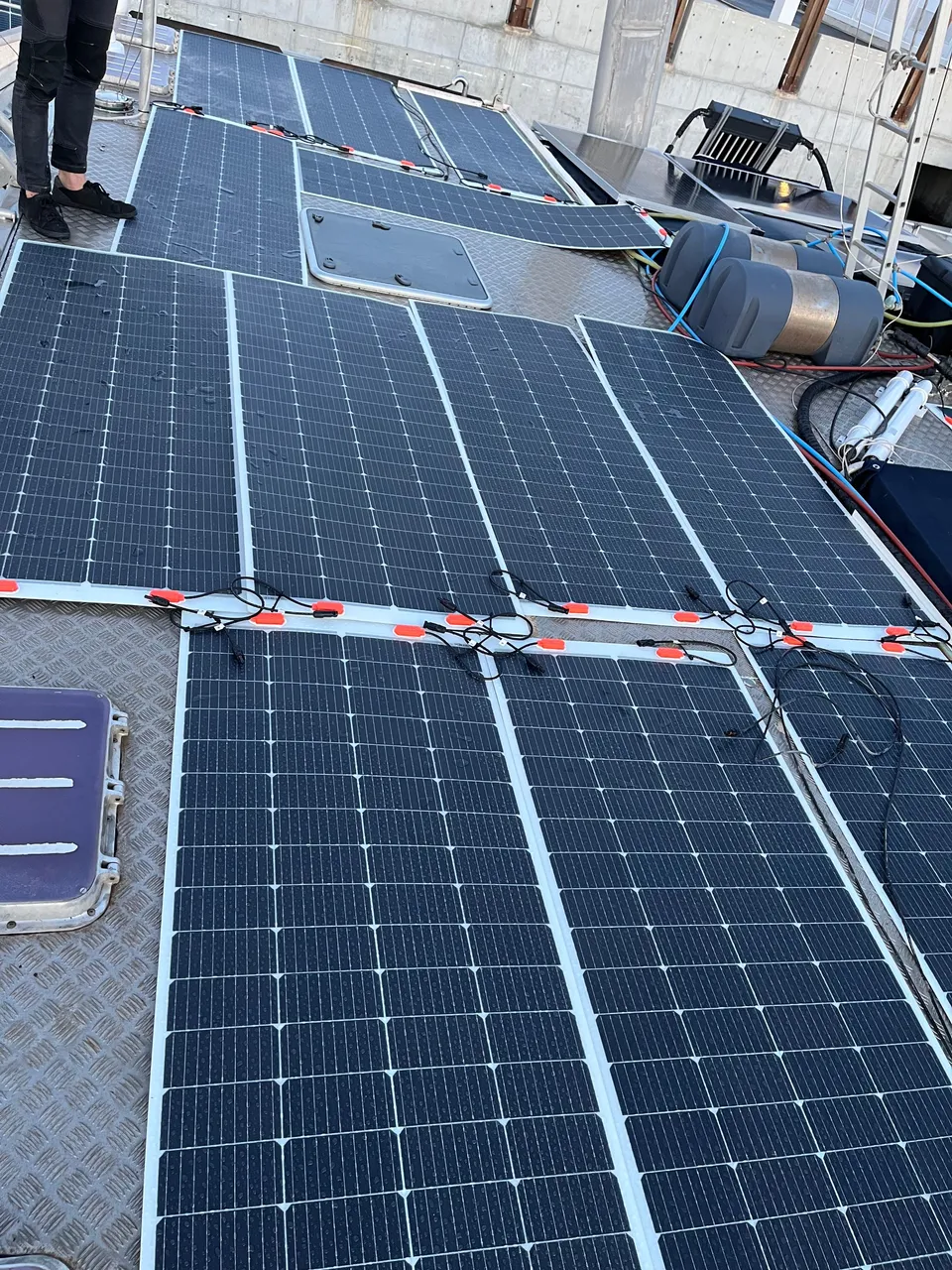
More details about my solar power systems can be found in this post.
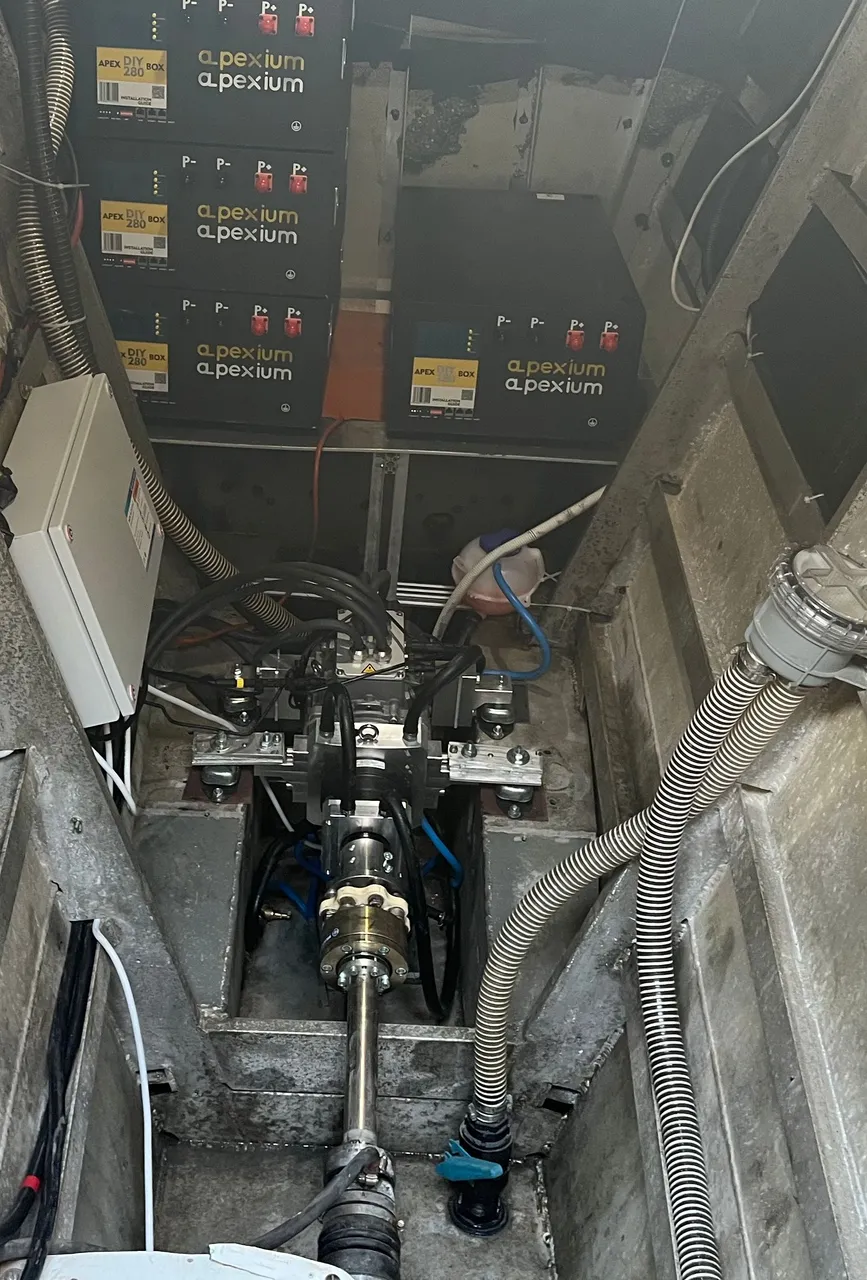
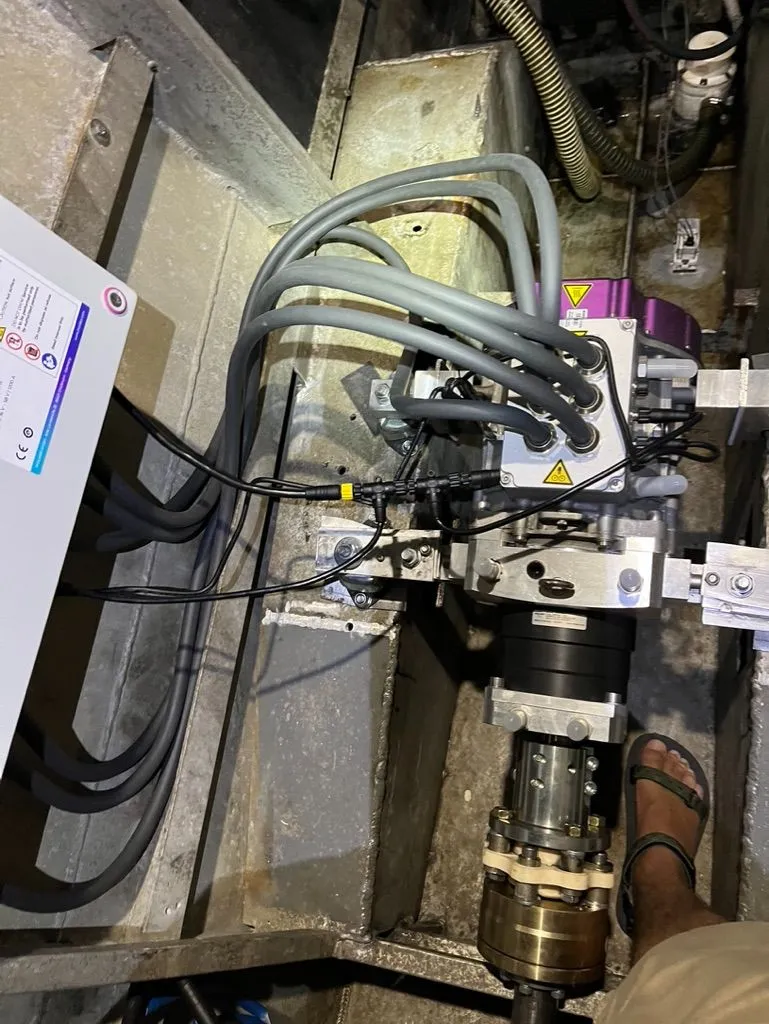
Here you can see the Molabo 48v 50Kw electric motor weighing only 60kg, including gearbox, and some of the 7 independent 48v batteries during the installation process.
3. Shaded Rear Science Platform
At the rear of Sea Explorer is a 15 sqm shaded rear platform for diving and science which has easy access to the water for deploying scientific equipment including hydrophones. There is 220v & 3 phase 380v power available as well as 48v DC from the main battery bank. There is also a table and chair(s) for working and a shower and barrel for washing equipment.
My 11.76m beam means cables deployed from the middle of the swim platform are far from the propellors and any risk of entanglement while underway.
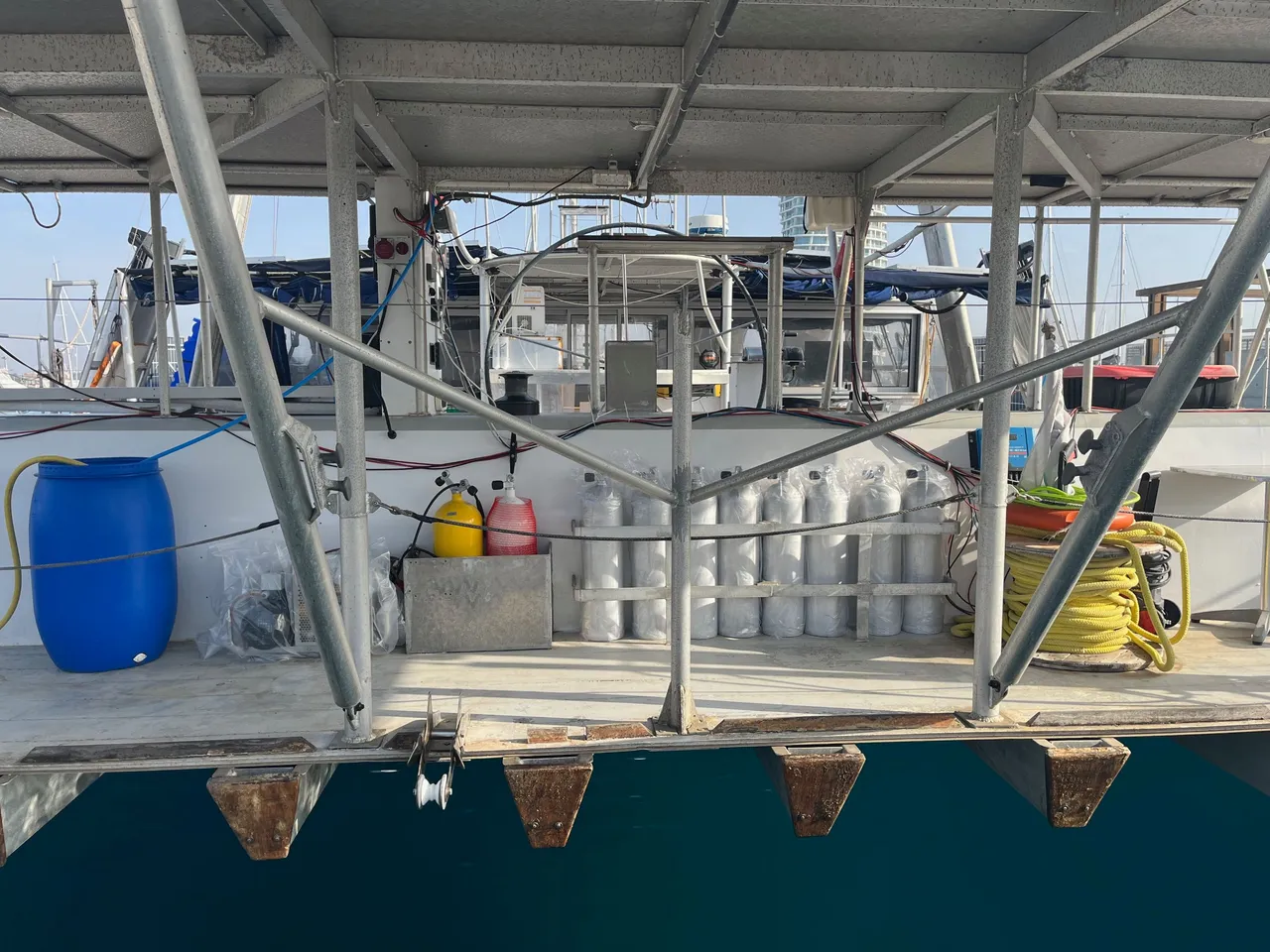
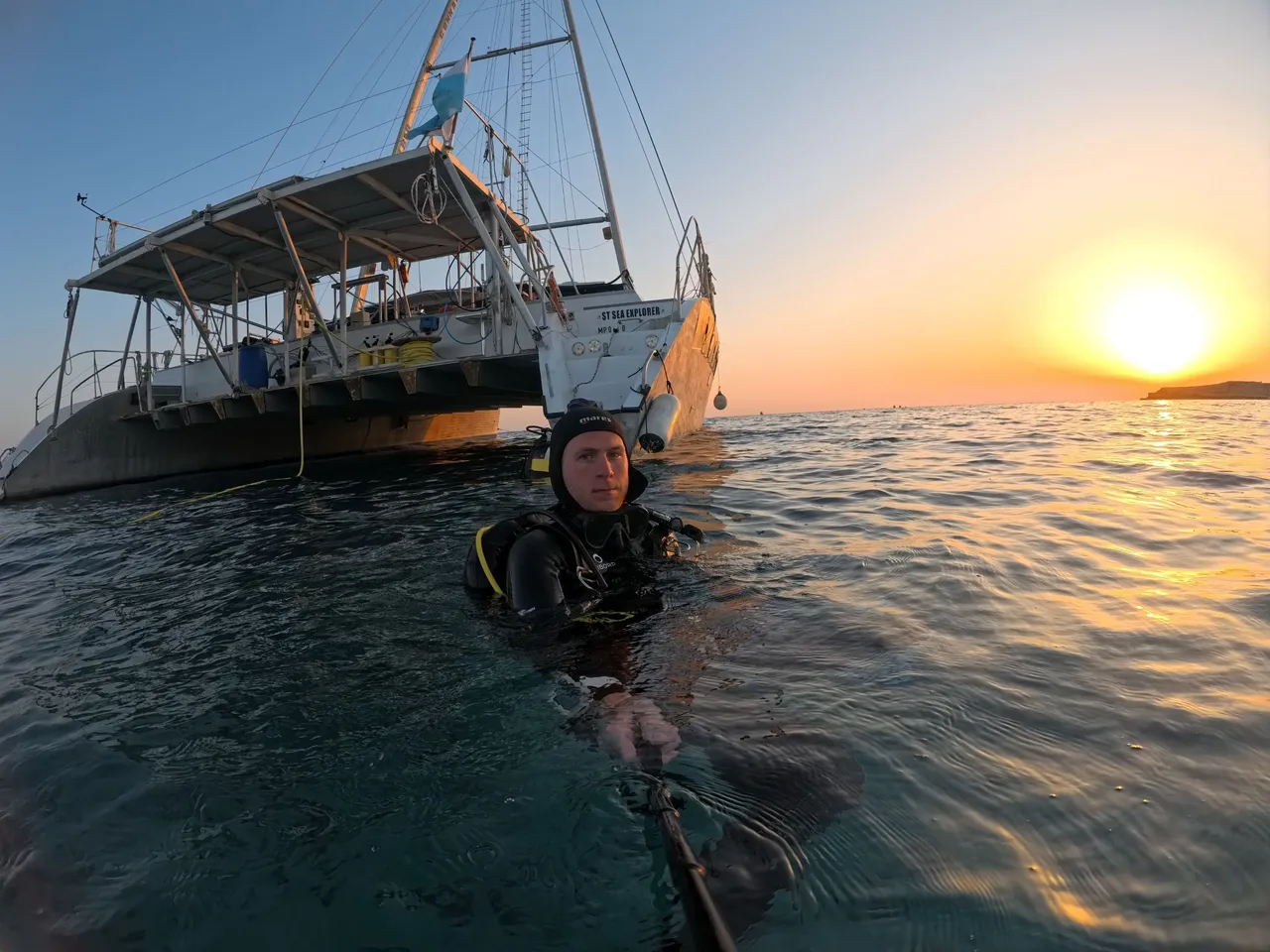
4. Large Upper platform for drone deployment etc
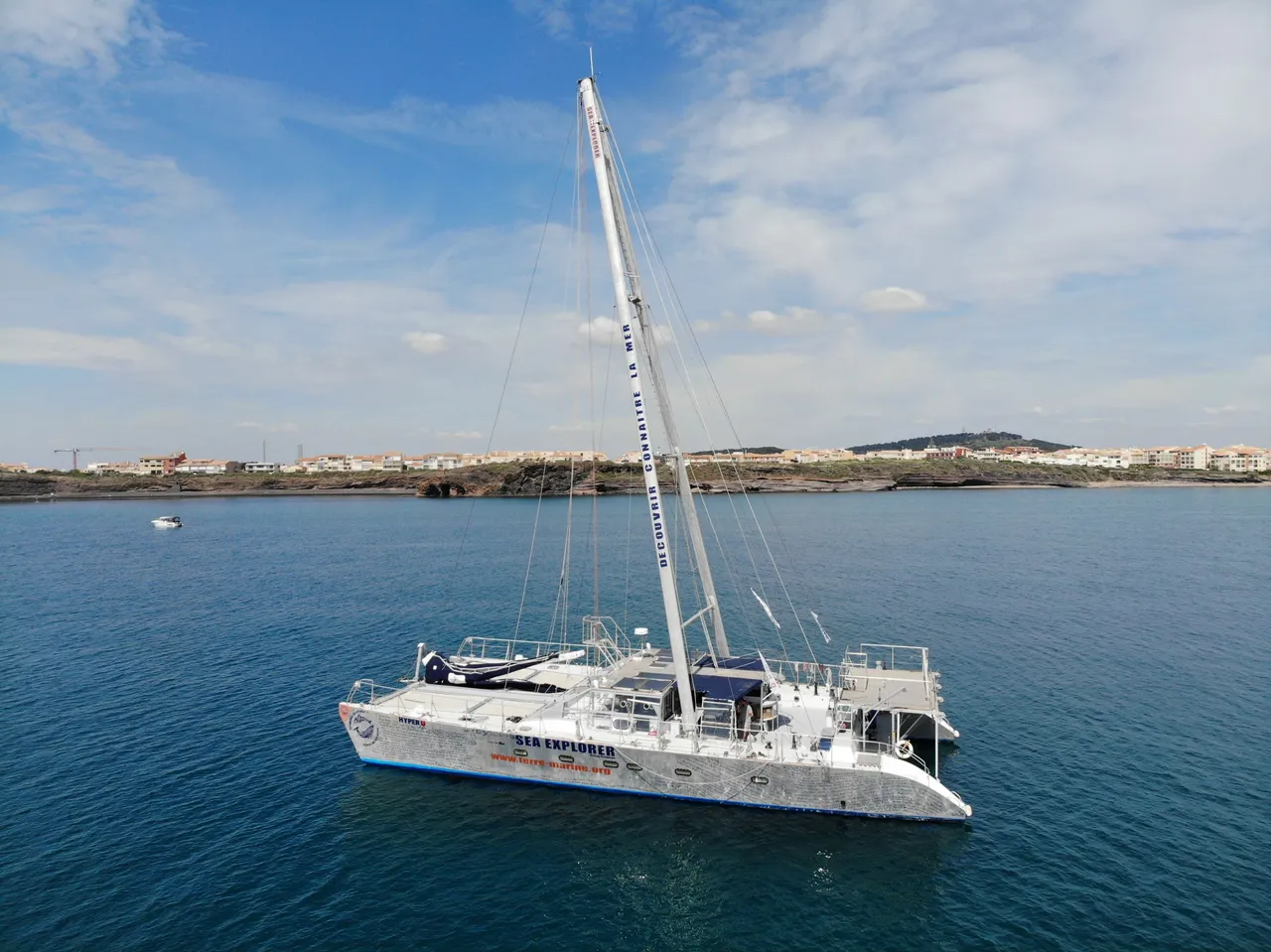
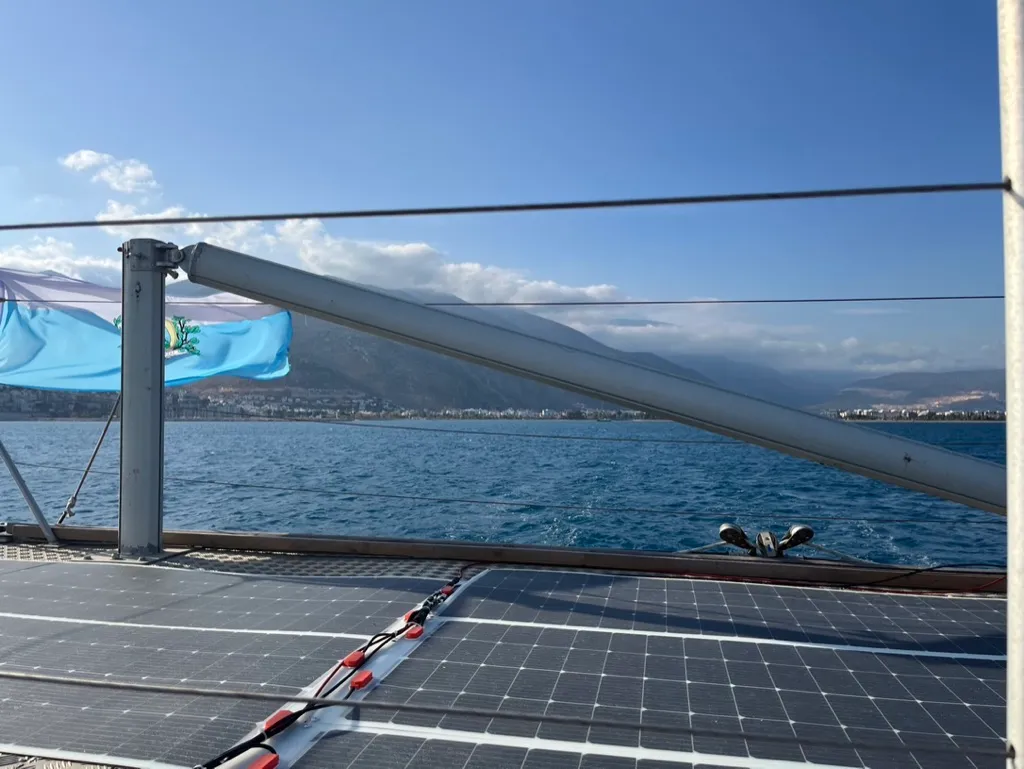
Above the lower science platform is a 20sqm elevated platform free of lines and shrouds that is the perfect place to launch drones, including very large ones. It is a large free space with free access to the water and air that can be used for many purposes.
5. 28m High A-frame mast with ladder and lookout points for sensor deployment
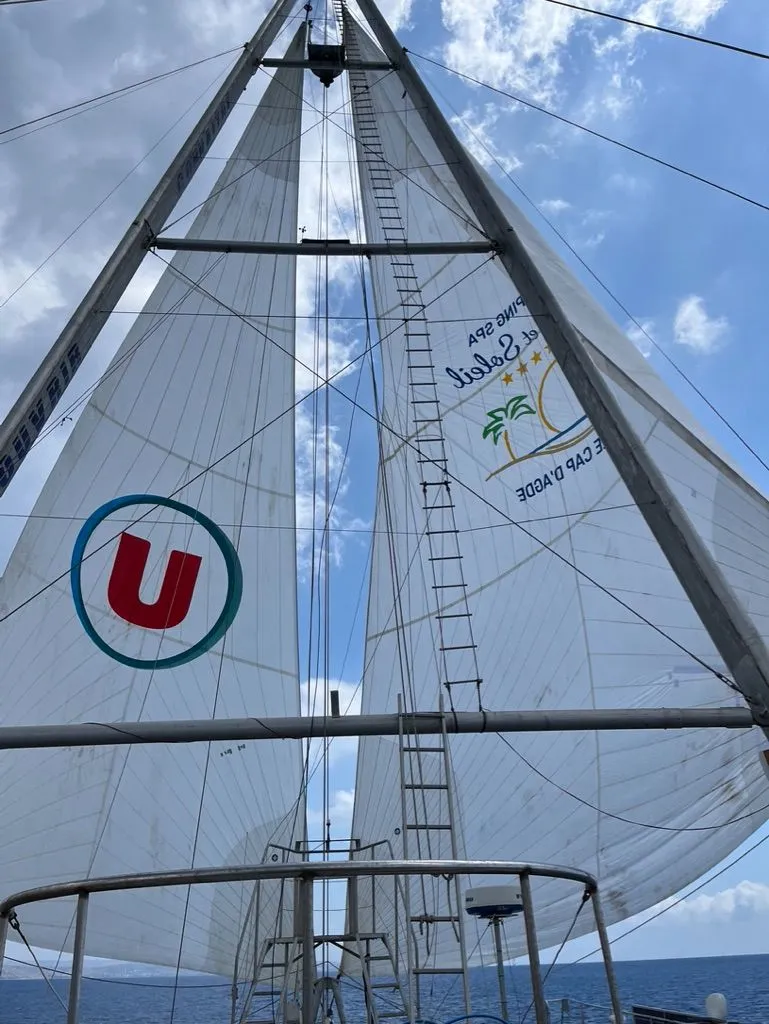
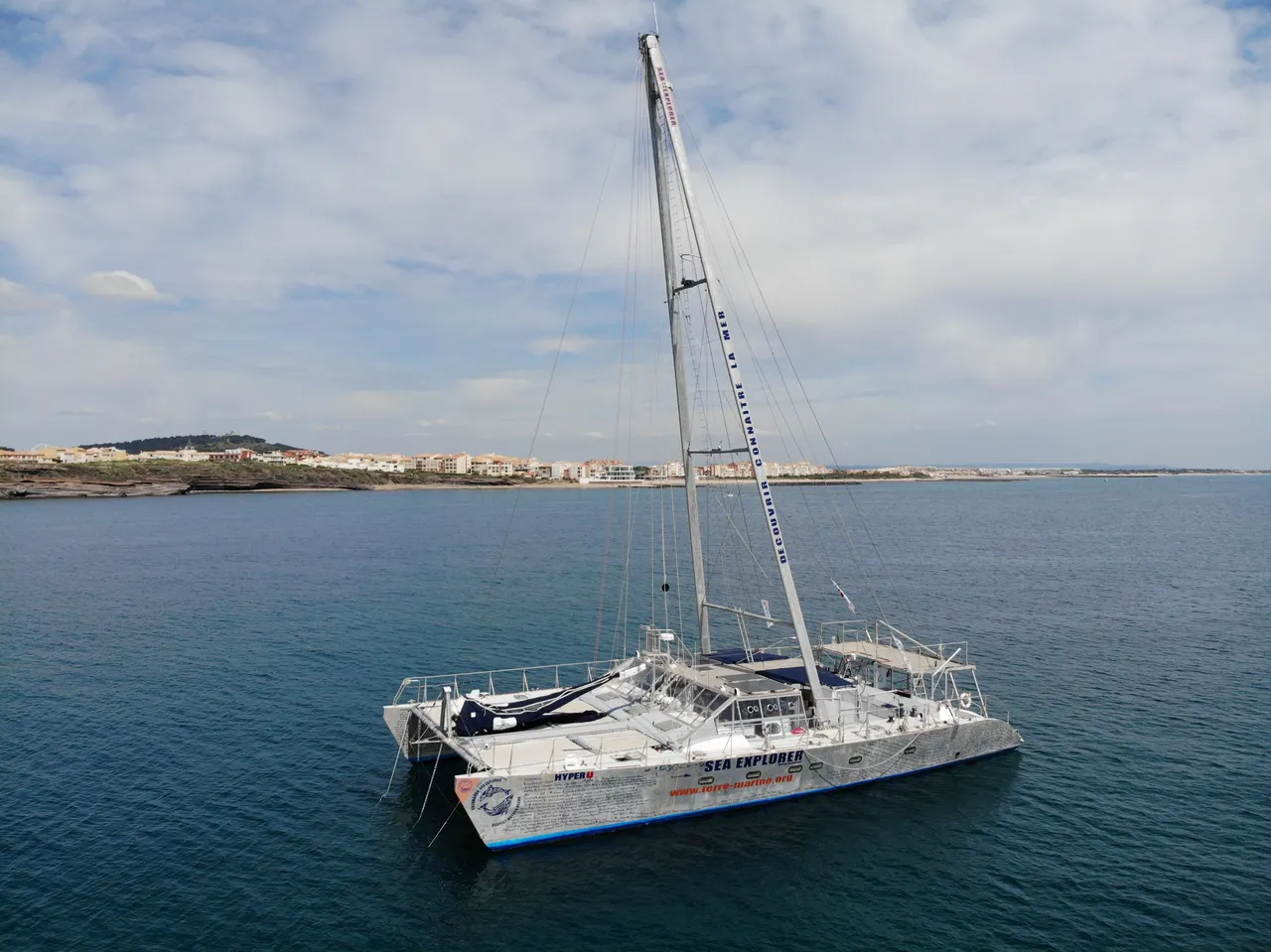
There is only one other vessel in the world with a large aluminium A-Frame mast like mine - Greenpeace's Rainbow Warrior 3.
At 28.2 m above the water the view and extended line of sight is unrivalled.
A ladder means its quite easy to climb to the crows nest lookout at 22m and onward to the top of the mast where various sensor and camera packages can be deployed to take advantage of the almost 19km visual line of sight and 22km radio horizon (both to sea level). My extraordinary stability and the strength of the mast means it is quite comfortable to climb at sea and even in high winds.
I am looking forward to my next scientific mission and potential future upgrades to enhance my marine research potential.
Contact Details
Here are the contact details to plan and book your scientific mission.
Timing is flexible depending on your needs.
Email: science@seaexplorer.me
Phone: +972 54 536 3529 (Phone, SMS, iMessage, Telegram & Signal but not WhatsApp)
Telegram: @akivah
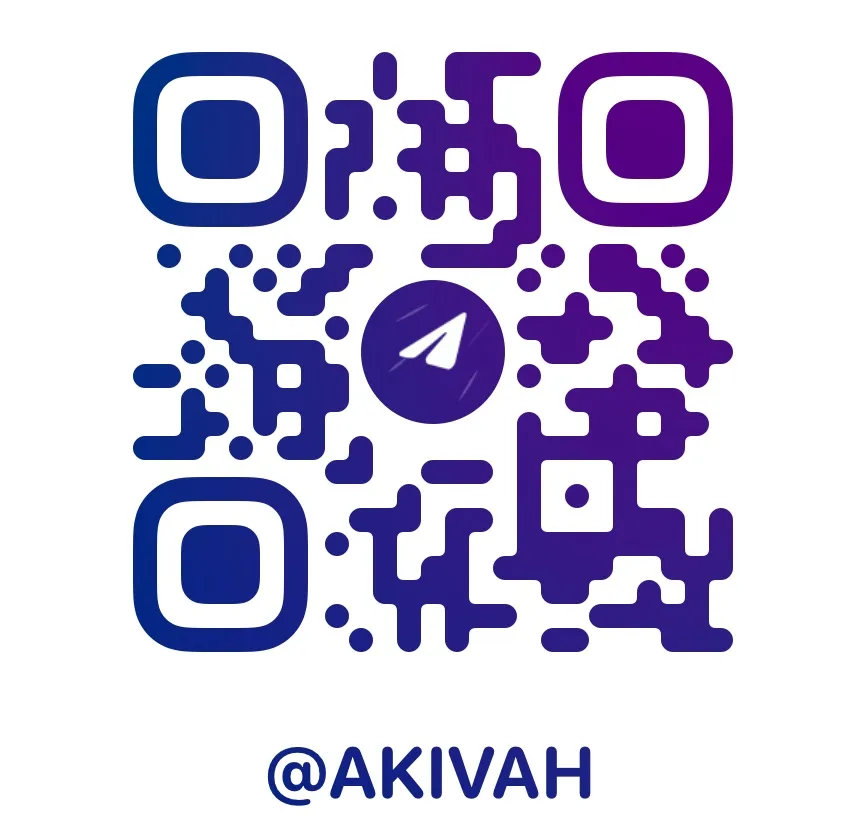
Signal: akivah.18
